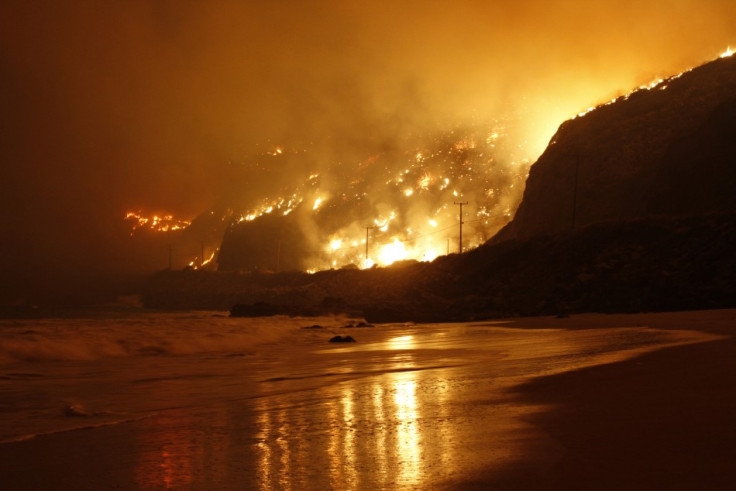Climate Change: Carbon Soot in Wildfires Contributing to Global Warming

When it comes to wildfires, carbon dioxide is not the sole problem. The black and brown carbon, which are also released in biomass burning, cause much more global warming per unit weight.
A new study by Stanford University Civil and Environmental Engineering Professor Mark Z Jacobson indicates that burning biomass is playing a much bigger role in climate change and human health issues than previously thought.
"We calculate that 5 to 10 percent of worldwide air pollution mortalities are due to biomass burning," Jacobson said. "That means that it causes the premature deaths of about 250,000 people each year."
Exposure to soot is strongly associated with cardiovascular disease, respiratory illness, lung cancer, asthma and low birth weights.
Carbon, of course, is associated with global warming. Most carbon emissions linked to human activity are in the form of carbon dioxide gas (CO2), but other forms of carbon include the methane gas (CH4) and the particles generated by such fires -- the tiny bits of soot, called black carbon, and motes of associated substances known as brown carbon.
Total anthropogenic carbon dioxide emissions, excluding biomass burning, now stand at more than 39 billion tons annually. That includes coal-fired power plants to automobile emissions, from concrete factories to cattle feedlots. But almost 8.5 billion tons of atmospheric carbon dioxide -- or about 18% of all anthropogenic carbon dioxide emissions -- comes from biomass burning.
The present research focuses on the various components of this burning, especially black and brown carbon. These contribute to more global warming per unit weight than other human-associated carbon sources.
When these soot particles find their way to water droplets in clouds, they absorb heat from the sun and cause evaporation of the droplet. Even in the spaces between droplets, these particles do the same, heat up the surroundings.
With fewer clouds up there to bounce off the sunlight, this light (heat) reaches the ground and heats up land and air.
Carbon soot can also settle on snow and ice, absorb heat and lead to ice melt. That exposes dark soil and dark seas which in turn absorbs more of the incoming heat.
There are white and gray carbon which can lead to the opposite effect by reflecting light.
Jacobson said the sum of warming caused by all greenhouse gases -- CO2, methane, nitrous oxide, chlorofluorocarbons and some others -- plus the warming caused by black and brown carbon will yield a planetary warming effect of 2 degrees Celsius over the 20-year period simulated by the computer.
The cooling effect of the light carbon particles amounts to a bit more than 1 degree, and thus we are left with a total net warming gain of 0.9 C or so. Of that net gain, biomass burning accounts for about 0.4 C.
About 7% of the total net warming caused by biomass burning (7% of the 0.4 C net warming gain) can be attributed to the direct heat caused by the fires.
Besides wildfires, biomass burning also includes the combustion of agricultural and lumber waste for energy production, common in Asia and Africa. While it may be sustainable as the fuel source is available, it is not climate neutral or clean, the author of the study said.
Jacobson's research, detailed in a paper published July 30 in the Journal of Geophysical Research: Atmospheres, is based on a three-dimensional computer model simulation of the impacts of biomass burning.
Satellite imagery from Nasa and the National Oceanic and Atmospheric Administration (NOAA) has shown that wildfire smoke from huge blazes burning in northern Canada and Siberia has been drifting over Arctic land and sea ice in recent days, where it could hasten the seasonal melt. It had been surmised that black carbon deposits on highly reflective snow and ice cover can speed up the melting of land and sea ice.
© Copyright IBTimes 2025. All rights reserved.





















